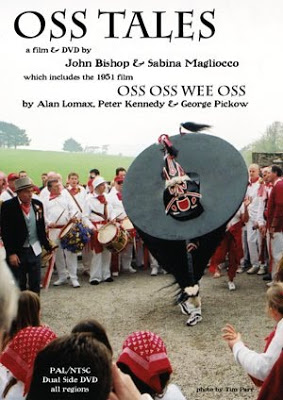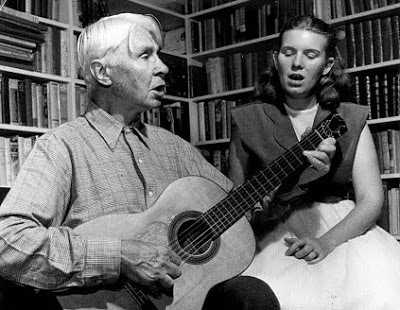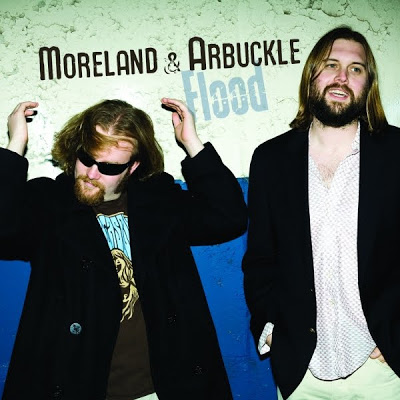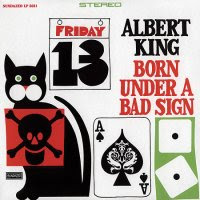El pasado 10 de diciembre falleció el fotógrafo y director de cine estadounidense George Pickow.
Los Angeles, 1922
Folk, Jazz, Pop.
Trabajó con Alan Lomax, historiador folk.
Newport Folk Festival 63-66 (Dylan, Muddy Watters, Woody Guthrie, Joan Baez, Johnny Cash, Peter, Paul and Mary…)
Louis Armstrong, Tony Bennett, Nina Simone, Little Richard, Dizzy Gillespie, Louis Jordan, Pete Seeger, Lena Horne, Josh White, Judy Collins…
Life Magazine, National Geographic, Cosmopolitan.
Cámara en los documentales y conciertos dirigidos por Alan Lomax.
Oss Oss Wee Oss (1953)
Alan Lomax and Peter Kennedy
The South West Film & Television Archive collection holds many films illustrating the rich history of folklore, rural cultural heritage and tradition in the region. The May Day ‘Obby Oss’ (or hobby horse) tradition in Padstow has its origins in a spring fertility festival and is an annual custom that continues to this day. This celebration involving traditional song, dance and costume is a closely protected event and has rarely been filmed, however, the archive holds amateur filmed material from 1928 onwards, television footage from 1961 onwards and this unique footage dating from 1953. This documentary is unique in that the production team were allowed unparalleled access to the people involved in the event, capturing the music, dances, and folklore surrounding the tradition. The film was shot by Peter Kennedy, who from the 1950s has made hundreds of sound recordings, and later films, of regional folksongs, music, dancing, story telling, folklore events and customs around Britain and Ireland. Another example of his work in the South West is ‘Shanty Man’ (1950s), recording the work of the men of the Portland Stone quarries who used song and rhymes to help their work. The Archive holds moving image of virtually every folklore and cultural tradition in its area, including harvest rites (such as corn dollies), ship blessings, Helston Floral Day, the Cerne Abbas Giant, and midsummer eve bonfires. Folk music and dance particular to the South West region such as Dartmoor step dancing was recorded by both Westward Television and BBC South West from the 1960s onward and is now held in the Archive, and Broom dancing was also captured on film by Peter Kennedy. Amateur film maker Major Gill also made films illustrating the lives of people and communities in the South West region although he also focused on working practices and industry; both cottage and heavy.
The Other Side of the Mirror: Bob Dylan Live at the Newport Folk Festival
1961
Actors: Bob Dylan
Directors: Murray Lerner
Matched only by the Beatles and Elvis Presley, Bob Dylan continues to captivate music and pop culture fans with a seemingly never-ending stream of new and old recordings, books, documentaries, feature films, and more. The Other Side of the Mirror – Live at Newport Folk Festival 1963-1965 is a worthy addition to the canon; whether this 83-minute compilation will serve to illuminate the Dylan myth or merely perpetuate it is open to question, but without a doubt there’s plenty of fascinating material here. There are nearly 20 songs represented, covering three consecutive years of Dylan appearances at the famed Rhode Island festival. Some have been seen before (most recently in No Direction Home, Martin Scorsese’s 2005 Dylan doc, and in Festival, a Newport chronicle released on DVD that same year and directed by Murray Lerner, who is also responsible for The Other Side of the Mirror). Some are from Dylan’s daytime «workshops,» others from his nighttime main stage performances. Some are complete, others oddly truncated. Some are terrific (like «Chimes of Freedom,» 1964), others not so much (cf. the turgid «With God on Our Side» from ’63, with Joan Baez adding shrill harmony). In any case, these were the years when Dylan assumed the mantle of «spokesman of a generation,» whether he wanted it or not. We see him evolving from the earnest young protest singer of ’63 to the visionary artist of the following year who, with the astonishing torrent of rhymes, alliterations, symbols, and brilliant turns of phrase in «Chimes» and «Mr. Tambourine Man,» turned the whole notion of songwriting on its ear. And, of course, we also witness Dylan’s turn from acoustic to electric guitar, when he was joined onstage by members of the Paul Butterfield Blues Band (sans Butterfield himself) in 1965; only two songs from that legendary (and, at the time, infamous) gig are seen here, and viewed four decades after the fact, neither «Maggie’s Farm» nor «Like a Rolling Stone» is all that special, notwithstanding some searing solo work by guitarist Mike Bloomfield. The DVD package, which includes a bonus interview with Lerner and a nice booklet with liner notes by Tom Piazza, adds to the appeal of what has to rank as a must-have for Dylanologists of every stripe. –Sam Graham
Jean Richie y Carl Sandburg
Ballads, Blues and Bluegrass1961
Director(s):Alan Lomax, George Pickow
Folk Songs of The Southern Appalachians
1965












